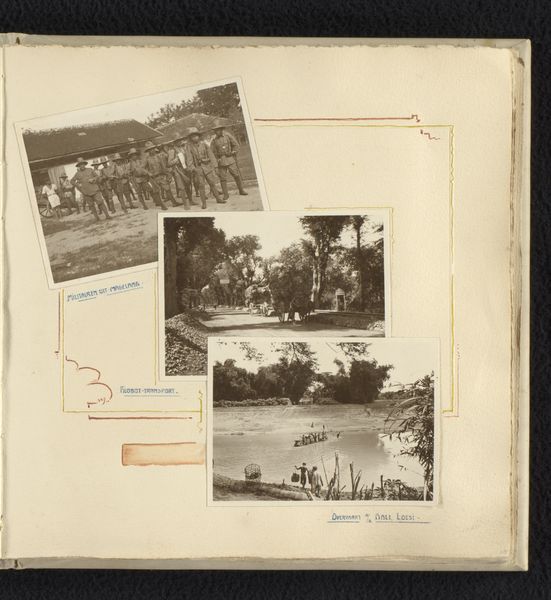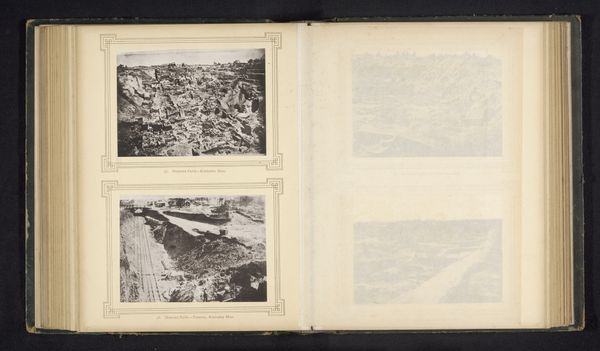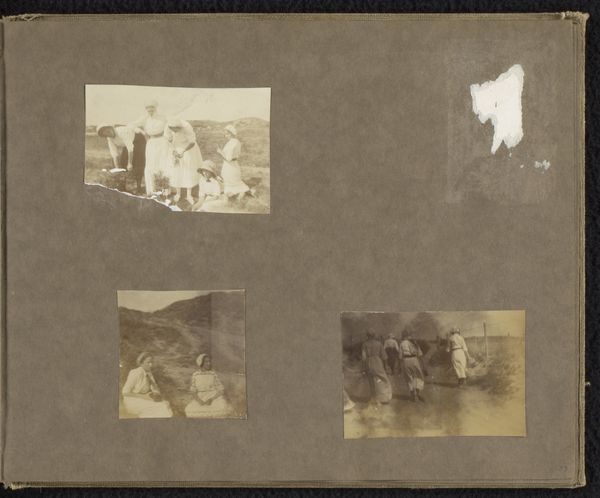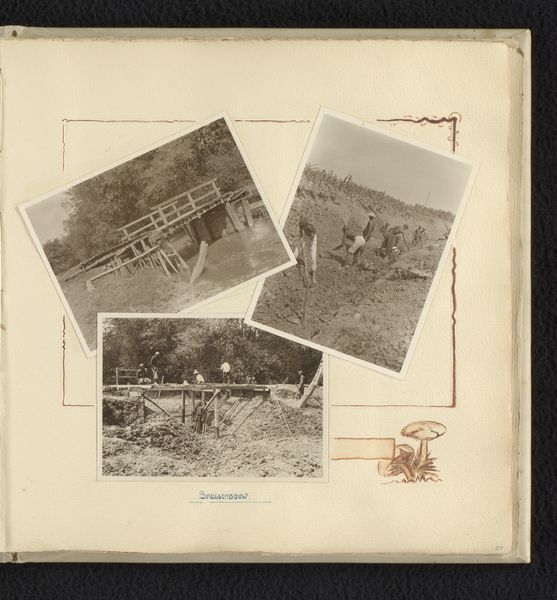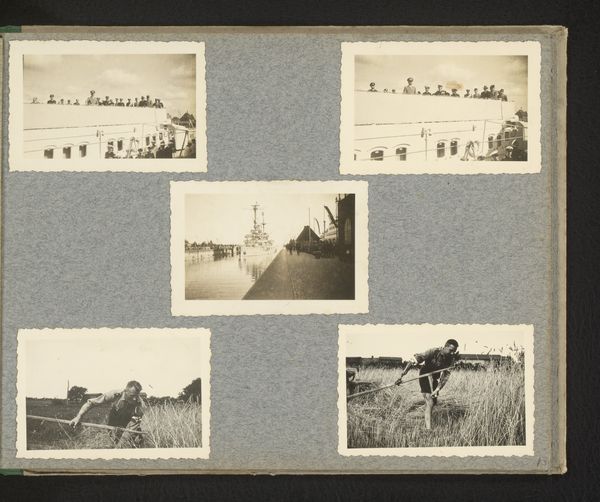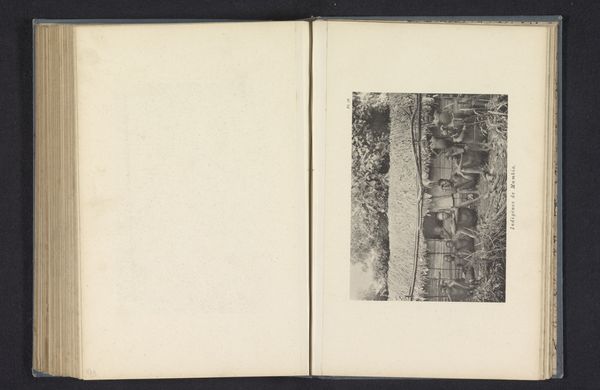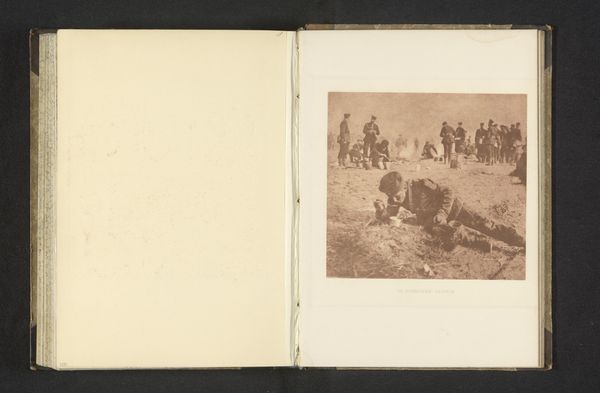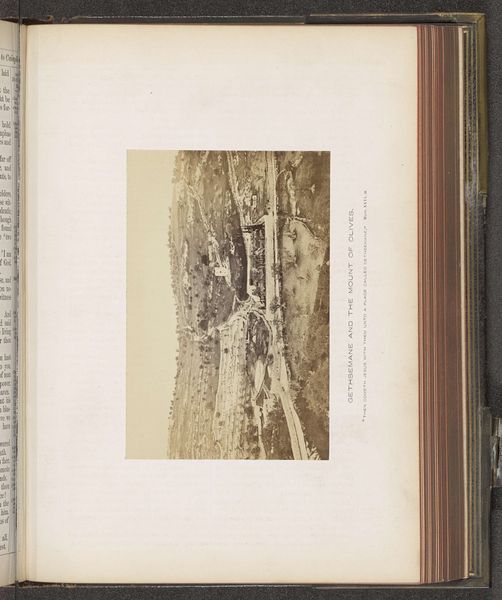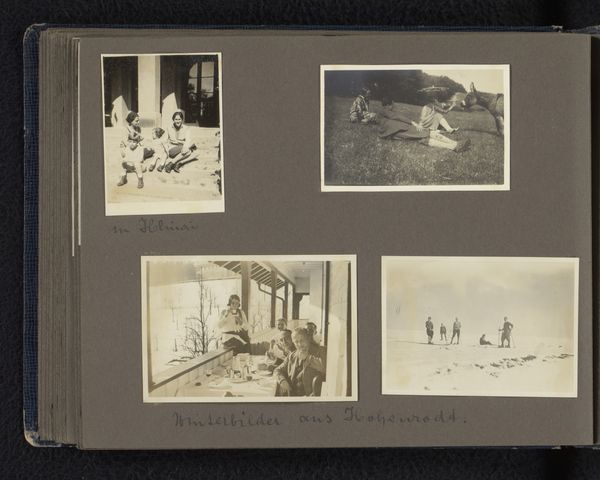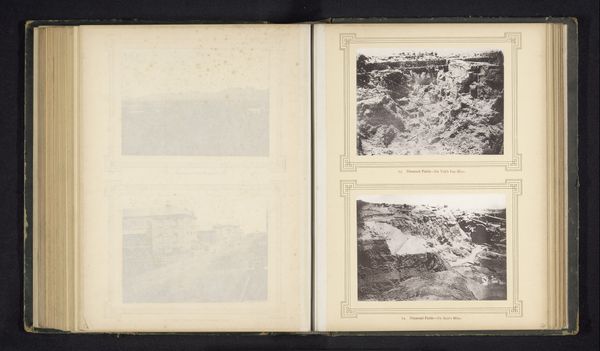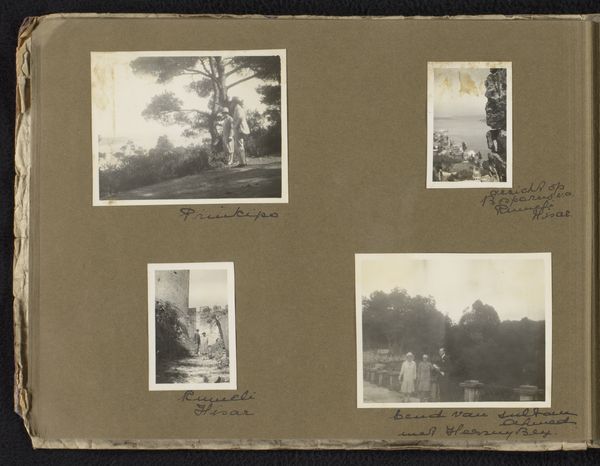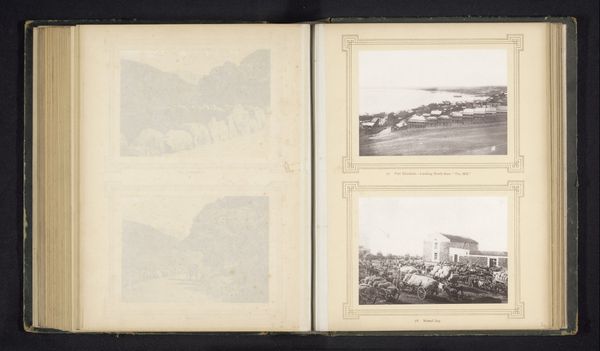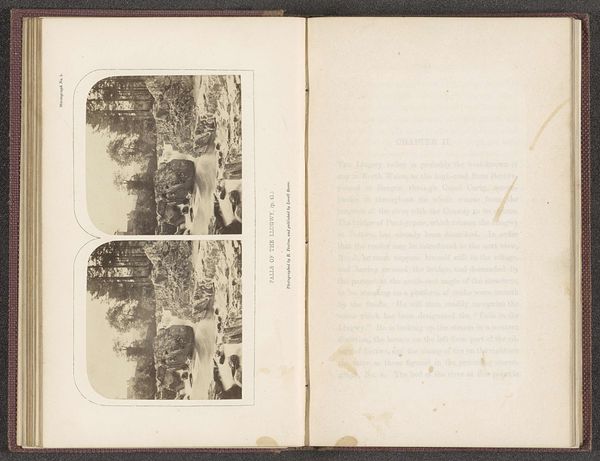
Fotoreproductie van (vermoedelijk) een tekening van een executie in Yokohama onder het toeziend oog van westerse troepen after 1864
0:00
0:00
felicebeato
Rijksmuseum
print, photography, albumen-print
# print
#
asian-art
#
photography
#
history-painting
#
albumen-print
Dimensions: height 53 mm, width 86 mm
Copyright: Rijks Museum: Open Domain
Editor: This albumen print, "Fotoreproductie van (vermoedelijk) een tekening van een executie in Yokohama onder het toeziend oog van westerse troepen," created after 1864 by Felice Beato and held at the Rijksmuseum, is quite striking. It seems to depict a public execution. What strikes me most is the contrast between the seemingly indifferent Western troops and the gravity of the event itself. What do you see in this piece? Curator: I see a potent symbol of cultural collision and the imposition of power. Consider the iconography: the act of execution itself, a visual language understood across cultures as a display of dominance. The presence of Western troops as spectators subtly shifts the focus; they become not just observers, but active participants in a changing social order. The photograph functions as a record, yes, but also as a commentary. Editor: Commentary on what, specifically? The role of Western powers? Curator: Indeed. Think about the psychological impact of this image on its original viewers. It's not merely a photograph; it's a carefully constructed narrative. What cultural anxieties does this image stir? The uniforms, the positioning of the figures...every detail adds to a sense of the disruption of traditional values. Are we witnessing justice, or something else entirely? Editor: So you see it as less a neutral document and more a constructed representation of power dynamics at play in Yokohama at the time? A visual record with a deliberate agenda? Curator: Precisely. And a haunting reminder of how images can carry complex and often unsettling messages through time. Editor: That’s fascinating. I'll never look at historical photographs the same way again! Curator: Good, because these images should ignite conversation and curiosity to unveil the complexity of cultural exchange in those historical times.
Comments
No comments
Be the first to comment and join the conversation on the ultimate creative platform.
